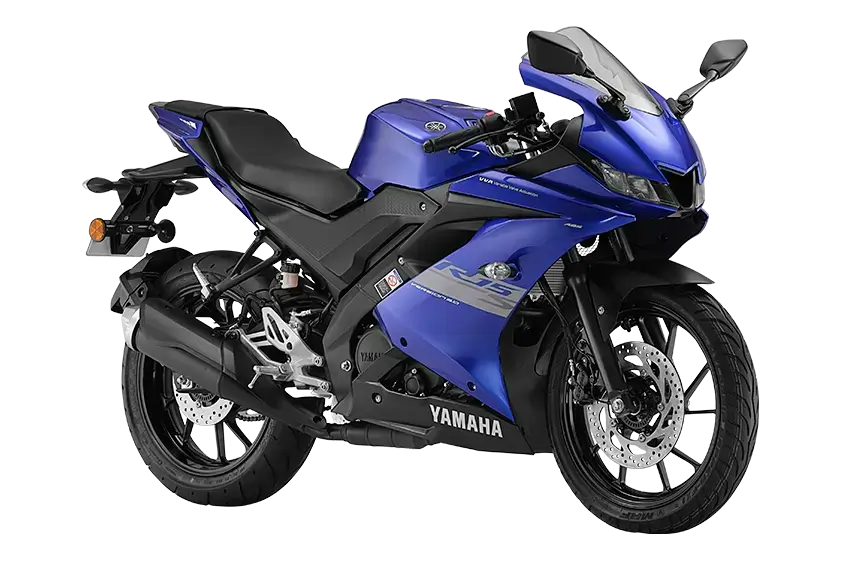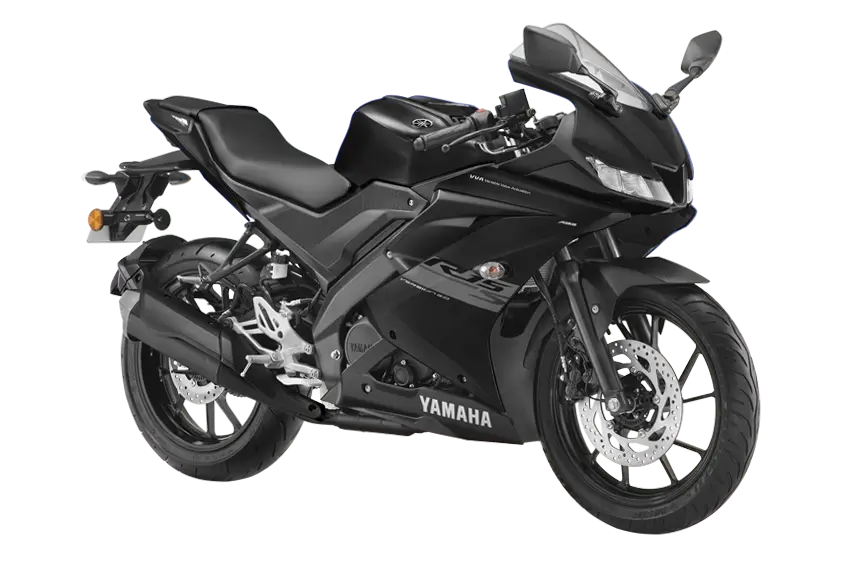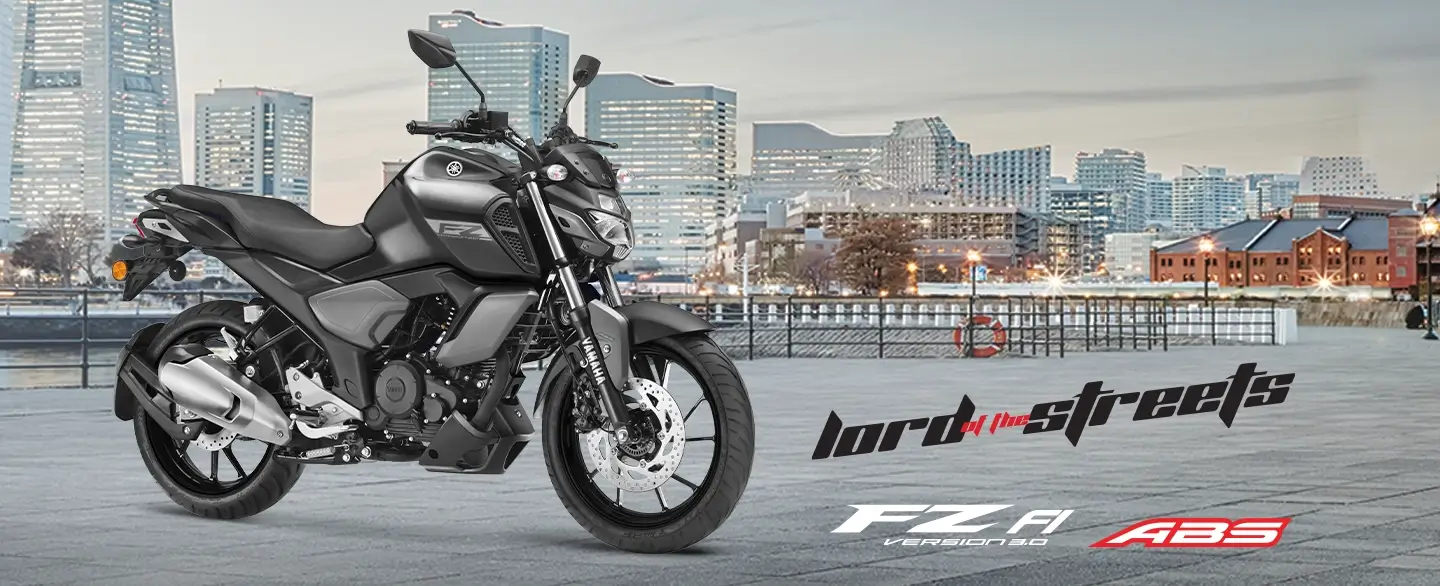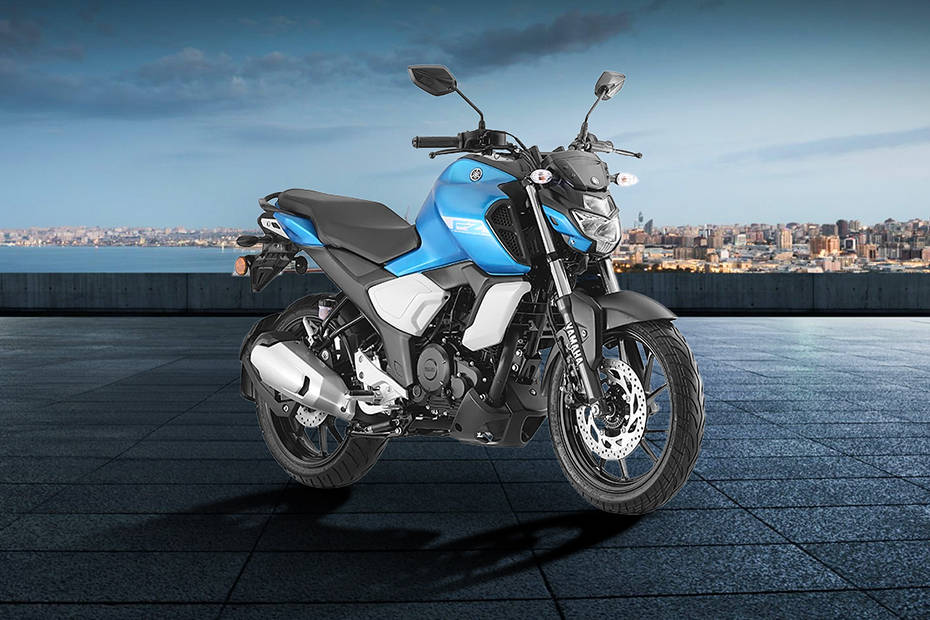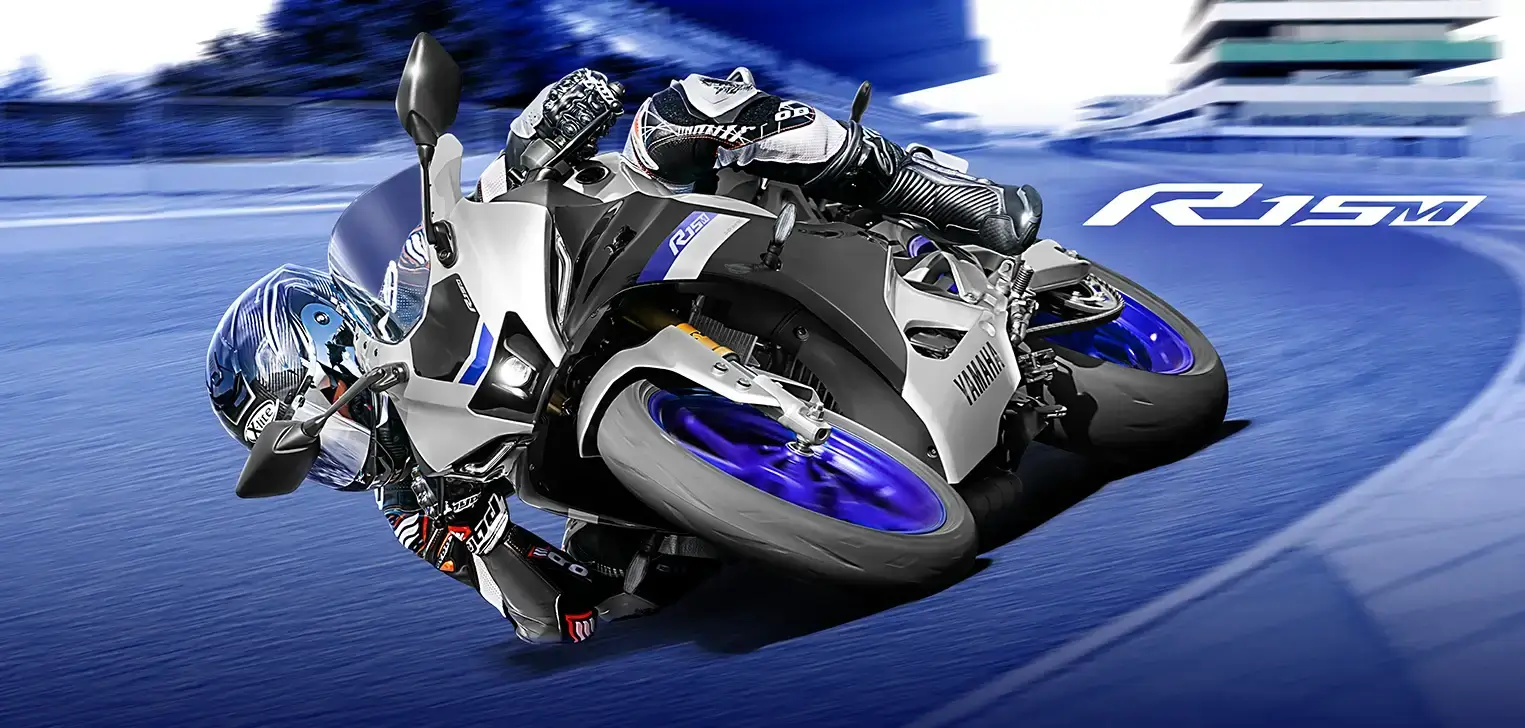- Engine TypeLiquid-cooled, 4-stroke, SOHC, 4-valve
- Compression Ratio11.6 : 1
- Clutch TypeWet, Multiple Disc
- Maximum torque14.2 Nm (1.4 kgfm) @7,500 RPM
- Displacement155 CC
- Maximum horse power13.5kW(18.4PS)/10000 RPM
- Transmission typeConstant mesh, 6-speed
- Fuel SystemFuel injection
- Bore & Stroke58.0 mm × 58.7 mm
- E20 CompatibleYes
- Starting system typeElectric starter
Description
Yamaha R15 S Version 3 – Power, Performance & Style
The Yamaha R15 S Version 3 is built for those who crave performance and style in one sleek machine. At the heart of this sportbike is a 155cc liquid-cooled, fuel-injected engine with SOHC (Single Overhead Camshaft) that delivers an impressive 13.5 kW (18.4 PS) at 10,000 rpm and 14.2 Nm of torque at 7,500 rpm. The DiASil (Die-cast Aluminum) cylinder ensures excellent cooling performance and long-lasting engine life.
✔ Stylish & Safe:
Aerodynamic LED headlights and tail lights not only enhance visibility but also add a modern, aggressive look to your ride — day or night.
✔ Comfort for Two:
The Unibody Seat features a flowing single-piece design that offers superb comfort for both rider and pillion, making long rides a pleasure.
✔ Superior Control:
The Super Wide 140mm radial rear tyre gives you enhanced grip, better handling, and superior shock absorption on any terrain.
💸 Price (Ex-Showroom, Pune): ₹ 1,68,839*
❓ FAQs about Yamaha R15 S Version 3
Q1: What is the mileage of Yamaha R15 S Version 3?
A: The R15 S V3 offers a mileage of around 40–45 km/l, depending on riding conditions and maintenance.
Q2: What is the top speed of Yamaha R15 S Version 3?
A: The bike can reach a top speed of approximately 136 km/h.
Q3: What is the seat height of Yamaha R15 S Version 3?
A: The seat height is 815 mm, making it suitable for most riders.
Q4: What is the difference between Yamaha R15 V3 and R15 S V3?
A: The major difference is the unibody seat in the R15 S Version 3, offering better comfort for both rider and pillion, while the standard V3 features a split seat.
Q5: Is Yamaha R15 S Version 3 suitable for daily use?
A: Yes, it’s lightweight, fuel-efficient, and offers a good balance of performance and comfort, making it ideal for daily commutes and weekend rides.
Q6: What colors are available in R15 S Version 3?
A: Availability may vary, but popular color options include Racing Blue, and Matte Black.
Q7: Is the Yamaha R15 S Version 3 BS6 compliant?
A: Yes, it is BS6 compliant, ensuring better fuel efficiency and reduced emissions.

